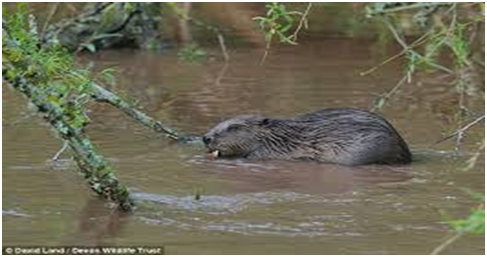
If you enjoy visiting an area to explore it’s wildlife and natural habitats then you will love Devon. This is definitely the place to explore seashore wildlife as there are tons of fantastic beaches in the county. The coasts support a large variety of different environments including cliffs, rocky shores, dunes, sand and muddy estuaries.
What you might expect to see on a Devon beach includes seaweed and shells and most commonly mussel shells. You’ll also find cuttlefish bones and stranded jellyfish. Recent sightings have included barrel jellyfish and moon jellyfish.
Who could forget the joy of exploring rockpools as children? As the tide goes out you can spot shrimp and crabs. Starfish can be seen clinging to the rock face and molluscs, barnacles and anemones sit on the pool floor. If you’re a local business and worried that you’re website is sinking, then think about Devon Web Design. For more information, visit http://vuonline.co.uk/web-design/
Devon’s rivers are also important life giving ecosystems with their own world of wildlife. Each summer and autumn, grown Atlantic salmon and brown trout begin their journey upstream in Devon’s rivers towards their spawning grounds. You will also find bream, pike and perch. Native water plants include purple loosestrife, water dropwort and hemop agrimony. If you love Otters, then you’re in luck as Devon’s rivers are home to a large amount of the fun little creatures. Along the River Otter, you might also be lucky enough to spot a family of beavers! These are the first breeding beavers to have lived in England for over 400 years!

Devon’s woodlands might be smaller than the national average but what they lack in size, they more than make up for in beauty. Oak trees are prevalent here but you will also see birch, hazel and holly. The woods at Halsdon, Andrew’s Wood, Dart Valley and Dunsford are all nature reserves and offer fantastic walks. Fields of bluebells in spring, badger setts, deer and woodpeckers all await you in these tranquil trees.
Devon also has some unique heathlands which provide stunning, wild landscapes. Sadly, in the last 80 years 75% of Devon’s heathland has disappeared but some can still be found in Bovey Heathfield, Bystock and Venn Ottery nature reserves. During the summer the heathland comes alive with deep pinks from the heather and bright yellows from the gorse. Warblers and stonechats will dart about overhead while at your feet you might spot adders, slow worms and lizards. This is a unique ecosystem indeed. During the summer evenings, you can hear the rather eerie call of the nightjars and the air will be filled with dragonflies, butterflies and moths. 30 different types of butterfly have been spotted on Devon’s heathland.
On the moors you can experience wildlife at it’s wildest. Dartmoor in Devon offers the opportunity to explore 400 square miles of moorland and is southern England’s largest open space. Ravens, buzzards, toads, frogs and lizards live here. Colours range from the pink heather, yellow gorse and purple moor grass and this is one of the only places where you might hear the call of a cuckoo. Meadow brown butterflies can be seen here, along with common blues and small coppers.
